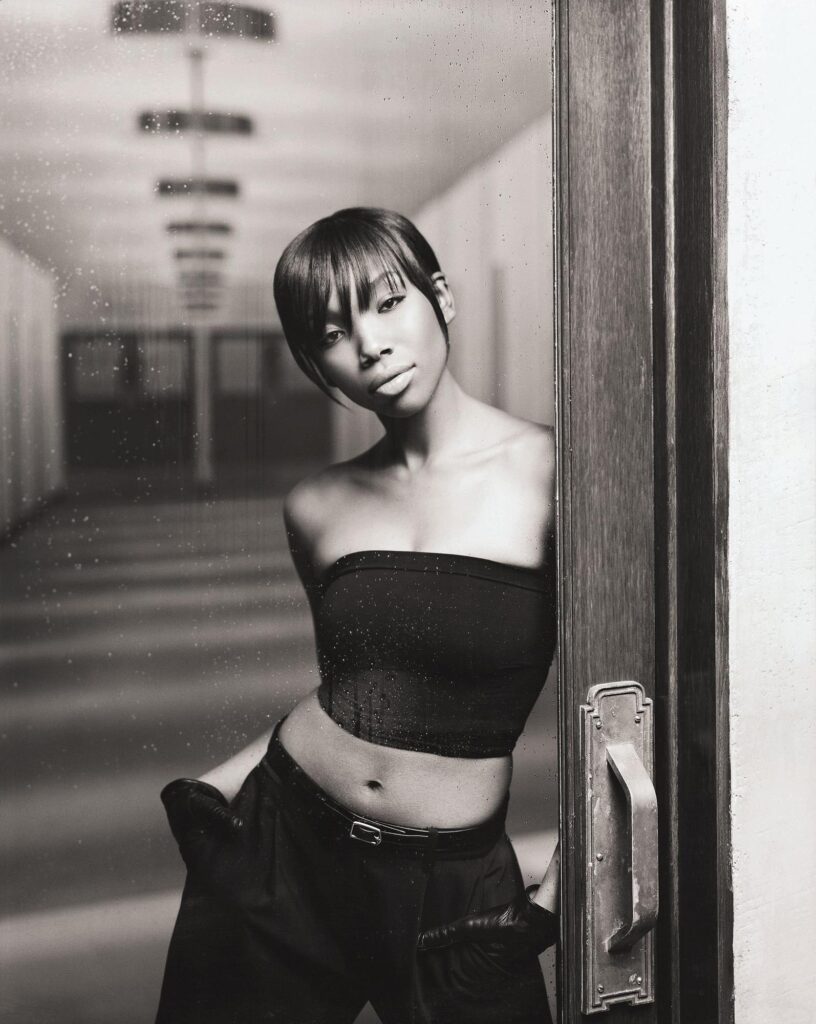No one can predict the future. We all have our ideas and notions on what we want or think will happen, but there’s no guarantee of what will be. The turn of the century didn’t meet us with flying cars and time travel and unlike the state of affairs, the sonic climate of R&B was on the precipice of serious alteration. What would R&B in the 2000s sound like? Will it embody the intrinsic essence of its previous generation, or would it upend its prior auditory rearing altogether?
The production behind artists like TLC and Aaliyah precisely upheld the aural expectations of what we anticipated the new millennium to be: laser-inspired synths, cybernated background vocals and digitized melodies that likened the listening experience to an expansive virtual reality world created through sound.
While the world took its sweet time to catch up, the music gave us a slight glimpse into what we imagined life would be like by that time.
One of the albums that represented a distinct mark in the evolution of the R&B lexicon was Brandy’s Full Moon. Listeners received minor nods on what was to come from her sophomore success Never Say Never.
Still, its revolutionary descendant became a blueprint that inspired the industry and brought up a flock of melodic progeny within the genre 20 years later.
Full Moon was unlike anything we’ve heard before, during and after its launch. Uniquely flawless in every way possible, the album’s intro (“B Rocka Intro”) foreshadowed a warning of the timeless presence to behold. Interestingly, we weren’t exactly aware of how groundbreaking it would be at that precise moment.
The detailed approach to the harmonies and background vocals were nurtured with intentional care, an element alone that solely separated this album from its peer group.
Brandy’s effortless vocal ascension and descension throughout the varied notes within numerous keys has been a feat exhibited here that many have admitted to emulating and studied when honing their craft.
As there are several avant-garde facets to the album, a few fundamental factors are also spread across the 17 tracks.
Among the many perceptible numbers is the ballad “When You Touch Me,” which elevated the ‘90s vocal grandiosity that true R&B enthusiasts live for. The stentoriously impassioned bridge is a prime example of how important that specific musical passage is when creating a quintessential R&B song.
An underrated gem on Full Moon is unearthed from “Anybody.” Here, continuing to play into the computerized essence, Brandy’s vocals switch from her pure voice to a subtle robotic effect that enhances the storytelling aspect of the track.
Each ingredient presents itself upon further listening. Specifically, on the chorus, her improvisational performance blanketing the main vocals serves as a congruous binder, while the harmonies and backgrounds ebb and flow to create the complete picture.
Full Moon became a manual for singers and producers alike regarding vocal arrangements, the usage of supportive vocals and how to execute a full-bodied sound. While her third album ordained her as the Vocal Bible, she seemingly had her own guidebook.
Michael Jackson‘s tenth studio album, Invincible, released in fall 2001, partnered the larger-than-life artist with Rodney Jerkins. Known as Darkchild, Jerkins worked in collaboration with Brandy as executive producer on Full Moon while producing tracks on what would be Jackson’s final set simultaneously.
The time with Jackson was a clear conduit to the energy that exists within Brandy’s LP. Five months after its release, it’s evident that the King of Pop was one of the central inspirations going into Full Moon, giving way to the sonic similarities they share.
Both albums embody a predominantly mechanical and electronically charged motif, allowing them to break out of their expected auditory mold. Yet, at the same time, both artists recognizably approach a new frontier in parallel.
Coincidentally, Brandy lent background layers on the opening song “Unbreakable” for Invincible, while “It’s Not Worth It” on Full Moon features coherent ad-libbed vocals from Jackson. Both parties shared evident respect for each other’s artistry, as displayed through their albums’ framework.
Brandy credits Jerkins for the intricate intensity that went into the album, layering at least eight to 16 of the same notes for one portion of a song.
The method of stacking vocals was something he experimented with on Never Say Never but after working with Jackson on Invincible, he completely transferred that technique over to his work with Brandy.

“Full Moon was happening on one side. Invincible was happening on the other side. Michael Jackson was in the other studio. I’m in one studio,” Brandy shared with Rated R&B in January.
“Rodney’s coming back telling me all of the secrets that I need to do that Michael Jackson is doing. ‘You need to do this with your stacks. You need to do this kind of harmony this way. This is the Michael Jackson way. If you want to be the greatest, then you better do this.’
To get Michael’s codes, like what he would do with his backgrounds, how he would stack his backgrounds, and just to get that kind of information from the greatest…I was just in a beautiful state, just doing that kind of music.”
Lifting Jackson’s tactics evolved from showing admiration for the greatest entertainer of the 20th century to single-handedly becoming an undeniable reference for an entire genre. Brandy had already been regarded as a star prior to this trailblazing era.
Still, the third notch of her discography was a notable turning point, further solidifying her impact in music. In maintaining classic status 20 years after its inception, Full Moon has developed into an influential treasure to the evolution of R&B, sonically and methodically.
Revisit Brandy’s Full Moon below.

